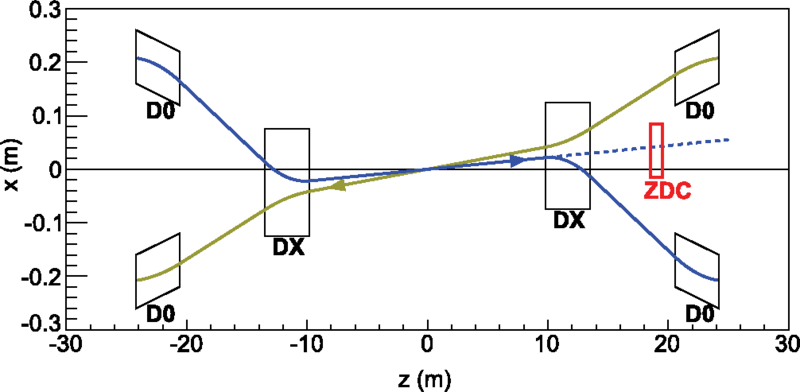Even the people tasked with understanding the most fundamental pieces of our universe run into surprises. And a surprise has popped up in the data of a decommissioned experiment at America’s largest atom smasher.
Brookhaven National Lab physicist Alexander Bazilevsky and RIKEN physicist Itaru Nakagawa hitting a proton against a gold nucleus, approximately (Image: Brookhaven National Lab)
Out on Long Island, New York, is the Relativistic Heavy Ion Collider, or RHIC, at Brookhaven National Laboratory. It is the world’s second-largest proton or atom collider (behind the Large Hadron Collider in Switzerland), and has made discoveries about the kind of matter that probably existed in the split second after the Big Bang. This week, physicists reported a new look at a 2015 observation, in which neutrons seemed to shoot out in the wrong direction after collisions between protons and gold or aluminium atoms. Now, they need to figure out the physics to describe what they actually saw.
Normally, “theorists predict something that tells us what we should measure. That’s how theory and experiment work together,” Alexander Bazilevsky, deputy spokesperson of RHIC’s defunct PHENIX experiment, told Gizmodo. “Sometimes it goes in different ways. That’s exactly what happened in this case. We didn’t expect what we observed.”
The RHIC collider consists of a pair intersecting rings that particles traverse at nearly the speed of light. The rings intersect at several points where the particles crash together. At those points sit mansion-sized detectors, cameras to record all of the detritus that result from the collisions.
You might know that particles have an innate property called spin (they aren’t really spinning, but follow mathematical rules that look pretty similar to the physics of spinning). RHIC can filter its proton beams so they only contain particles spinning in one direction. Back in the early 2000s, RHIC scientists sent a beam of these spin-filtered protons against another beam of protons, unleashing neutrons that were more likely to skew to the right. That result in itself was surprising and led to some new physical theories, explained Bazilevsky.

A schematic of the PHENIX detector. Blue are protons, green are gold or aluminium nuclei. D0 are bending magnets, and the dotted line is the neutron beam going into the ZDC detector, part of PHENIX (Image: Aidala et al, PRL (2018))
Once the mathematics behind that behaviour was established, the theorists did some more calculation and said they’d expect no big effect if the second beam changed from protons to gold. “But the experimental data just broke this completely,” said Bazilevsky. They observed the new combination with the PHENIX experiment back in 2015, hitting the spinning protons against much larger gold nuclei. The neutrons showed a much larger directional preference in the opposite direction.
It was graduate student Minjung Kim at Seoul National University who first uncovered the effect in the data. After a closer look, some beam adjustments and a dedicated search, the physicists confirmed that the effect was real and not some systematic error.

Image: Brookhaven National Lab
So, what’s going on? Theorists are only beginning to understand. Generally, these subatomic particles interact using the strong nuclear force – the force that keeps nuclei glued together. But perhaps there is a unexpected contribution from a different force: electromagnetism.
PHENIX has since been decommissioned, but an upgraded detector, sPHENIX, will soon take its place. The researchers haven’t yet tried to measure the effect on other colliders, but have continued to present at conferences to encourage others, such as theorists, to think about what could be causing this strange behaviour. Now, Bazilevsky wants to move cautiously forward to ensure that everything is done correctly to see what they should be measuring next.
He said: “We should take time to get better understanding, communicate clearly and build a clear plan of what we should measure, and how it will help us in understanding the puzzle.”
[PRL]
